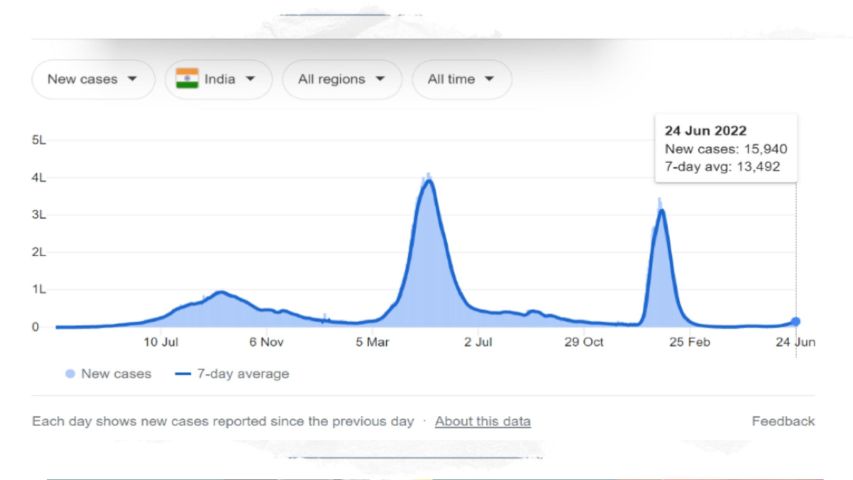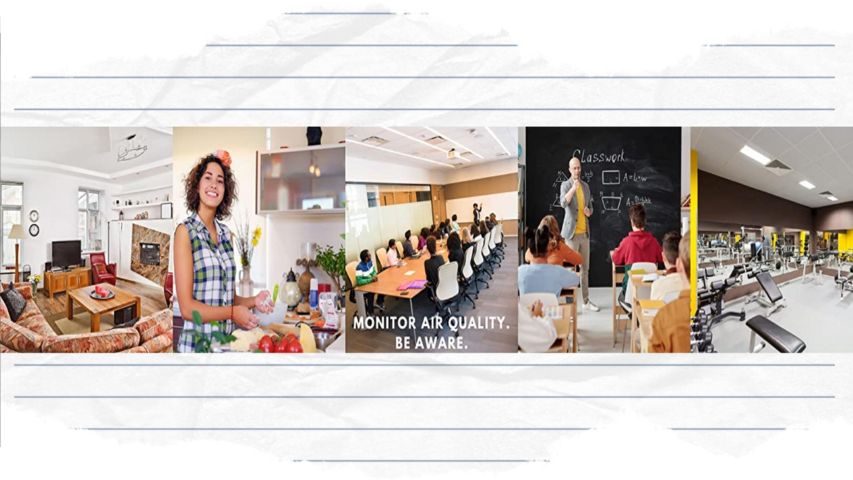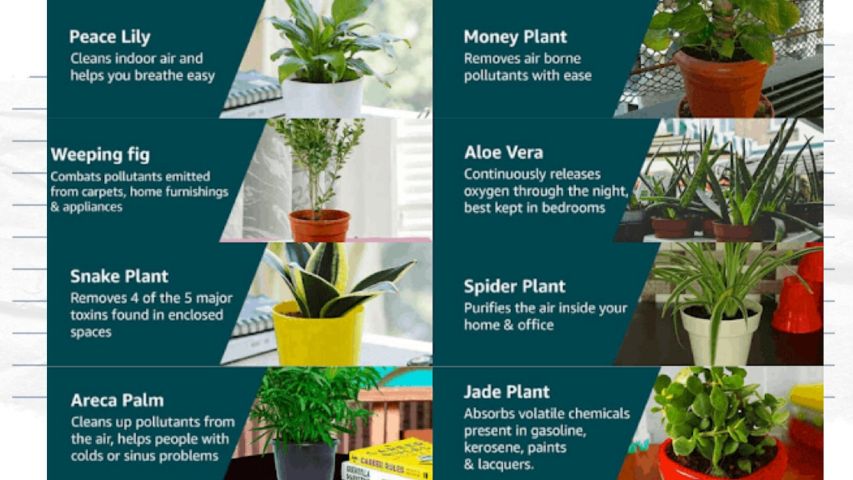-853X543.jpg)
SAFELY NAVIGATING THE FOURTH SURGE
by Dr. Kishore Madhwani June 28 2022, 12:00 am Estimated Reading Time: 13 mins, 5 secsDr Kishore Madhwani responds to questions as cases of COVID-19 have been skyrocketing in the country over the last two weeks.
First some facts. The fourth surge has been especially in 29 states where the positivity, determined by the ‘R’ value, has risen above one. Hence we should not let our guard down. Expert scientists S. Parshad Rajeshbhai, Subhra Sankar Dhar and Shalabh from IIT Kanpur (using the Bootstrap methodology) predicted a fourth surge around June 22, 2022, that will reach a peak on August 23 and continue until October 24 (total 4 months). This was published on the preprint server MedRivix on February 24 and is now coming true.
According to the experts, the severity of the fourth wave will depend on emergence of new variants and the vaccination status of people, including the administration of booster shots. As the experts’ predictions come true, India has reported 15940 fresh Covid 19 cases in last 24 hours from five states - Maharashtra 4205, Kerala 3981 cases, Delhi 1447, Tamil Nadu 1359, Telangana 493 and Karnataka 816. The worst hit cities are Mumbai (1898) and Delhi (1447).
The last one week witnessed a steady rise in hospitalisation numbers in Chandigarh, with the average occupancy of COVID beds with oxygen in government hospitals between 15 and 23. Hence, all states have been asked to increase testing, enhance monitoring of influenza-like illnesses and severe acute respiratory infections, and send samples for genomic sequencing at a war footing.

Question: Should we be worried?
No, we need not panic! However, currently it’s entirely on us (citizens, corporate administrations and health authorities) to ensure that most cases are prevented. The cases we see today are not severe like we had witnessed during the Delta surge. They are much milder as today we are vaccinated with two or three doses and a majority of us are due for our precautionary booster dose.
None of us should contract COVID-19 because it is not like the simple flu. It enters the bloodstream, makes our blood thicker due to coagulopathy triggered by it and affects various body systems. It can very rarely cause complications like deep vein thrombosis (blood clots in lower limbs), heart attacks, avascular necrosis of head of femur (stops blood supply to hip bone), paralytic attacks, mental fog and chronic fatigue.
Question: Why have cases increased in June 2022?
There are 3 reasons:
1) The current increase in COVID-19 cases is due to sub-variants of Omicron itself. Almost all samples being sequenced are that of the BA.2 sub-variant of Omicron (which caused the third wave in the country in January 2022). Hence, there has been no change in the variant. There is another sub-variant of BA2 Omicron - BA2 12.1 - that was first reported in the United States and is known to be around 25 percent more infectious than the previous Omicron sub-variants. Studies have shown that people who were previously infected with other Omicron sub-variants remain susceptible to BA2 12.1.
Therefore, it is possible for a person to be infected twice by Omicron. In that sense, we might be following the United States pattern, where a lull in cases was subsequently followed by an influx of cases caused by various Omicron sub-variants, including BA2 12.1. Sub-variants of Omicron BA2 12.1 in circulation are responsible for the surge also in the U.K. (41 percent increase in cases since 11 June, 2022). Having said that, immunity from a previous infection, be it caused by any of the variants of COVID-19, and vaccination provide the best shield, to date. But the protection is against severe disease rather than the infection. Hence, hospitalisations still remain low even in our states that are witnessing an increase in cases and this is encouraging news.
The virus is spread from an infected person’s mouth or nose in small liquid particles when they cough, sneeze, speak, sing or breathe. These particles range from larger respiratory droplets to smaller aerosols. One can be infected by breathing in the virus if you are near someone who has COVID-19, or by touching a contaminated surface and then your eyes, nose or mouth. As this subvariant is highly infectious (than all the previous strains so far) it is spreading more easily indoors and in crowded settings. Therefore we all have to be extra cautious when we are in crowded settings. If even one family member gets infected in our households, it can be an issue as a majority of us live in small tenements.
2) Varied symptomatology of the disease: A striking feature is some patients are without fever. They are having a cold, sore throat, nasal blockage and intense body ache. This time. patients have been afflicted with more gastrointestinal symptoms such as diarrhoea, fullness of abdomen, nausea and irregularity of bowel movement. Few children have shown severe conjunctival inflammation, redness and watering from the eyes. Majority of the patients are not testing themselves for COVID-19 as they are under assumption that it is like a mild flu-like illness, which ironically it is not. Hence please get yourself examined by your physician if you are experiencing flu-like symptoms.
If they recommend blood investigations, kindly follow their advice to the T. Few doctors are recommending CRP, D DIMER, FERRITIN, LIPID PROFILE and SUGAR LEVELS to ensure that prophylactic medication and timely intervention are initiated to avoid complications of COVID-19. Such complications were witnessed in February 2022 during the Omicron Surge. It is prudent to be safe than sorry.
Omicron sub-variants are known to spread faster than the Delta variant, which caused the devastating second wave but they are also known to remain mostly in the upper respiratory tract itself. This implies that Omicron does not usually lead to pneumonia and drop in oxygen saturation. Because of this reason, ICU admissions, oxygen requirements and deaths were much less during the third omicron wave. But one needs to realise that the virus does enter your bloodstream and enters various body systems. Hence, once again a reminder that it is of utmost importance to ensure control of co-morbid conditions of affected patients to avoid complications.
3) There has been a general laxity in observing COVID-appropriate behaviour, particularly an increased complacency in not wearing masks, which is one of the reasons behind the increase. We have become complacent over time: For instance, many teachers and students during private physical tutions do not wear masks, nor follow social distancing norms.

As a country, upto 2019, our citizens had not been educated in mask wearing to ensure hygiene and limit the spread of viral illnesses. The Jain community monks wear them, as it is religiously inherent in their culture. India should now adopt this mask-wearing culture as a matter of hygiene to prevent viral communicable diseases to protect oneself and others.
A logical way ahead beckons: mask wearing to be strictly mandated in the interest of employee, colleague, child, family and consumer health (especially for safety of elderly and co-morbid patients irrespective of age). We are responsible for their health and they have a right to enjoy a healthy lifestyle in a safe environment.
4) Monitoring of Carbon Dioxide as an indicator of Indoor Air Quality: Carbon Dioxide is a simple asphyxiant gas that can cause discomfort, uneasiness and vague feeling of tiredness (and death as an extreme event when reaching hazardous levels). Its measurement is a useful way to assess indoor air quality and consumer/customer comfort. Ventilation Rate (VR) is a key parameter affecting Indoor Environment Air Quality and the energy consumption of buildings. The use of CO2 as a “natural” tracer gas for estimating VRs, is a time tested method. Ventilation Rates are hence recommended as critical parameters that relate to building energy performance including health and comfort of occupants. Ventilation rates determined using CO2-based methods should be routinely assessed today with special attention to crowded places’ applications.
Therefore, the Society for Advancement of Occupational and Environmental Health (SAOEH) Board Members recommend that particularly in summer months, the CO2 levels may be measured inside offices, crowded places like malls during low and maximum occupancy periods so as to get the estimation of the air quality inside the building. As a solution 25 percent of outdoor air can be mixed with air inside to balance the CO2 concentration. It is a public health issue that needs to be addressed on priority.
Using CO2 as an indicator of ventilation, American Society of Heating, Refrigerating and Air-Conditioning Engineers (ASHRAE) and The Indian Green Building Council have recommended indoor CO2 concentrations be maintained at or below 1000 ppm, preferably at/or 800 ppm in offices. Also in small enclosed spaces, if ventilation is poor and CO2 levels exceed 800 parts per million, COVID-19 will get the upper hand and propagate through asymptomatic carriers.
Hence, in current times air quality monitoring for CO2 levels should be our mantra to defeat COVID-19 at workplaces, schools, colleges, crowded establishments like gymnasiums, shopping malls and cinema halls. Nexus Malls (one of India’s largest retail networks) is ensuring permissible CO2 and CO levels at all their malls and parking areas across India. Today, I would be safer inside a Nexus Mall than anywhere else for protection from COVID-19 as all their employees (including retail outlets) are fully vaccinated too.
If your booster vaccination shot is due, please take it. You should not waste time. If the health authorities have already contacted you for this. The interval between the second shot and the booster dose has now been reduced to six months after the second dose (earlier it was nine months). Please take it at the earliest, because higher the antibody levels, less are the chances of getting infected. Those who are vaccinated get fewer post COVID symptoms.
Also, mixing of vaccines e.g. Covisheild and Covaxin (taken 2 doses earlier) has been permitted for Corbevax 1 dose. This heterologous immunization boosts the immune response extremely favourably. Precaution (booster) vaccines can neutralise the severity of the disease, even as you get repeat infections.
Question: Some of us have been infected during Delta and again during Omicron surge. Few of our colleagues have been infected during the third surge in February and now again. We are really fed up with these repeated infections. Please suggest innovative tips to prevent them?
As indoor spread of COVID-19 is increasing and so is the spread from crowded places, you need to ensure good ventilation, wherever you are. Air should come from outside the premises and pass away, so the virus does not stay in the room for a longer period. If there are many occupants in an AC room/conference room, one can do real time carbon dioxide monitoring with sensors. If CO2 levels are 400 to 800 parts per million in a specified area, ventilation is good here and likelihood of contracting COVID-19 here is almost negligible. These sensors are cost effective and readily available on Amazon. Alternatively, the Green Building Council of India could be approached for recommending Indian vendors.
Use indoor plants for Air Purification at workplaces, crowded places like malls/restaurants and home, too. A list is enclosed of plants that purify indoor air by absorbing toxins that are emitted from materials used in buildings and its synthetic components. Particularly formaldehyde and benzene have been found to be high inside buildings. A survey of indoor air in a Delhi locality by Central Pollution Control Board (CPCB) found indoor air to be of poorer quality when compared to outside air. Also no Air Fresheners and incense stick use should be permitted to be used inside.

5) Additional Precaution with NITRIC OXIDE NASAL SPRAY: the virus can be killed as it enters your body through the nose or nasopharynx by using nitric oxide. This is available as Sanotize in Canada and Fabispray in India.
A study conducted at Srinakharinwirot University in Bangkok, Thailand, found participants who took the spray after COVID-19 exposure were 75 percent less likely to become infected. Hence, if there is a positive case in your family or office, the spray ensures good protection from acquiring the disease and also if unfortunately one acquires the disease, its severity is reduced by 50 percent.
This is indeed great news. In India , it has received an emergency use approval by the Central Drugs Standard Control Organization (CDSCO) for treatment of adult patients with COVID-19 who have a risk of progression of the disease. Dosage recommended: two puffs in each nostril every eight hours.
The nitric oxide nasal spray holds an edge over antiviral pills as it can be used daily by adult patients. The spray uses nitric oxide to kill the virus and reduces viral load by 99 percent in 48 hours. Although currently it can be used by adult COVID-19 patients with a risk of progression of disease, large prevention trials to use as a preventive nasal spray are underway for use by all age groups.
6) Be vigilant. Take care of yourself by following COVID appropriate behaviour. Seeing people without masks makes an individual uncomfortable about using the protection themselves. Even one-way masking - one person wearing the mask and others without it - still gives significant protection. So, you should use it even if no one else is.
Sanitise your hands and sneeze or cough in your elbow crimp. Make use of UVC chamber to sterilize your office stationery, mobile phones, laptops and groceries because Ultraviolet C light kills the DNA of virus in a minimum of two minutes exposure: for bigger objects, the contact time is five minutes. Learn to live with COVID, if you are tested positive please get your blood investigations done as recommended by your personal physician.
Question: How can we maintain caution, control and contain the spread?
According to the WHO we all must be reminded now to address important factors like:
- Sanitization of self (with 60 percent alcohol-based sanitizer/rubbing hands for 20 seconds with soap and thoroughly washing with water) and surfaces (with one percent hypochlorite/disinfectants)
- Wear masks.
- Access to adequate ventilation (during travel/work/visiting places like shopping markets, restaurants or malls to name a few). During travel, for controlling the spread of the highly infectious Omicron, it is ventilation during travelling, during work, during shopping. In short, any activity involving interaction/gathering of a group of people that will play a crucial role in containing the spread.
Hence, when stepping out of home, carry your sanitizer, don your mask and avoid elevator use. If feasible, self-drive your vehicle. If the car is being chauffeured, sit behind, exactly diagonal to the car driver. Request the driver to shut off the car air-conditioner and keep the window on his right shut. As you will be sitting behind and diagonally opposite, the window to your left will be entirely shut. The remaining windows can be open. If two people are travelling in the car, please keep all windows down by 4 inches. When entering the public or office place, ensure that you:
- Avoid closed conversations for more than five minutes
- Avoid being in closed, confined spaces (with poor ventilation) for a long duration and
- Remind everyone to wear masks, especially in gatherings of 50 people. Even if others are not wearing a mask, you please wear one.
- Boost up precautionary vaccination doses and be vigilant.
The acronym MV3 summarizes all precautions (mask, ventilation, vaccination, vigilance). We need to armour ourselves by adhering strictly to MV3 in order to control and conquer COVID-19.
I would like to acknowledge Dr T K Joshi (Ex-Advisor to Union Health Ministry and Board Member Central Pollution Control Board, New Delhi, India) for his valuable inputs on indoor plants and indoor air quality.




-173X130.jpg)
-173X130.jpg)
-173X130.jpg)
-173X130.jpg)
-173X130.jpg)
-173X130.jpg)

-173X130.jpg)